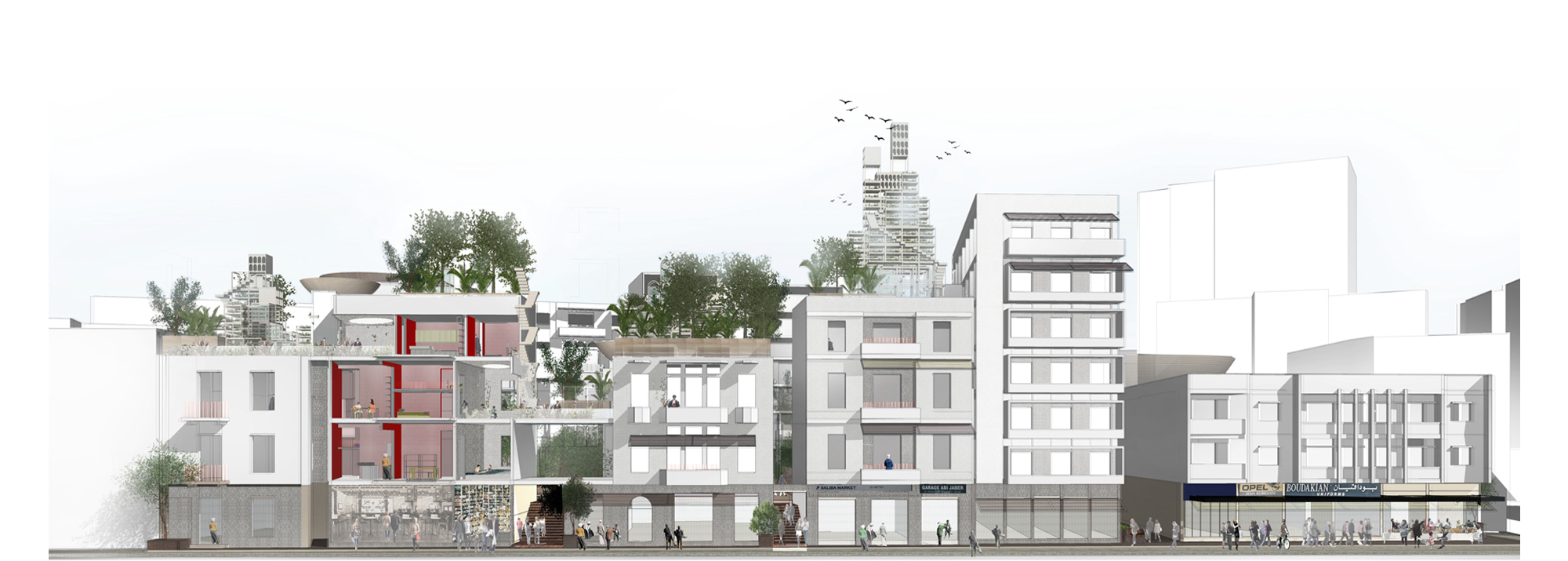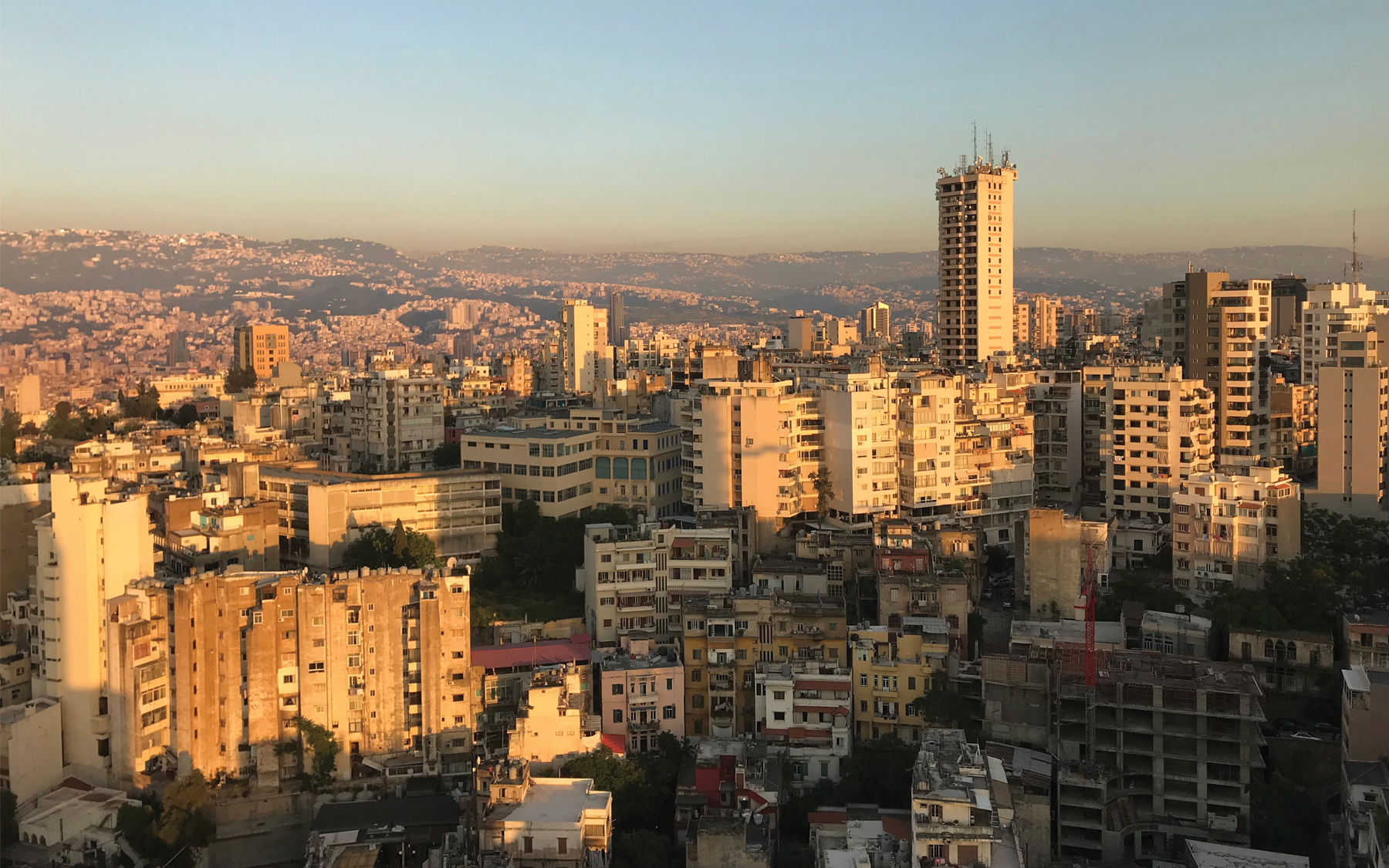
We assert that Housing must be made available on the principle of socially determined need, not profitability. We call upon the city- both its planners and inhabitants- to employ a degrowth strategy which would utilize the existing housing stock and built fabric of Beirut as a shared urban resource.
What we propose aims not to function as a complete narrative for Beirut's de-growth, but rather as a socio-spatial imaginary of a city which no longer blindly follows a culture and model of economic growth that has operated more as an amplifier of spatial and social injustices than a means to mitigate them.
Through a mechanism of equitable resource allocation and social ownership (both at the community and individual level) the real estate economy could be freed from the limitations of binary constructs such as public versus private and communal versus individual, and could harness their inherent potential for meaningful and affordable spaces in the city.
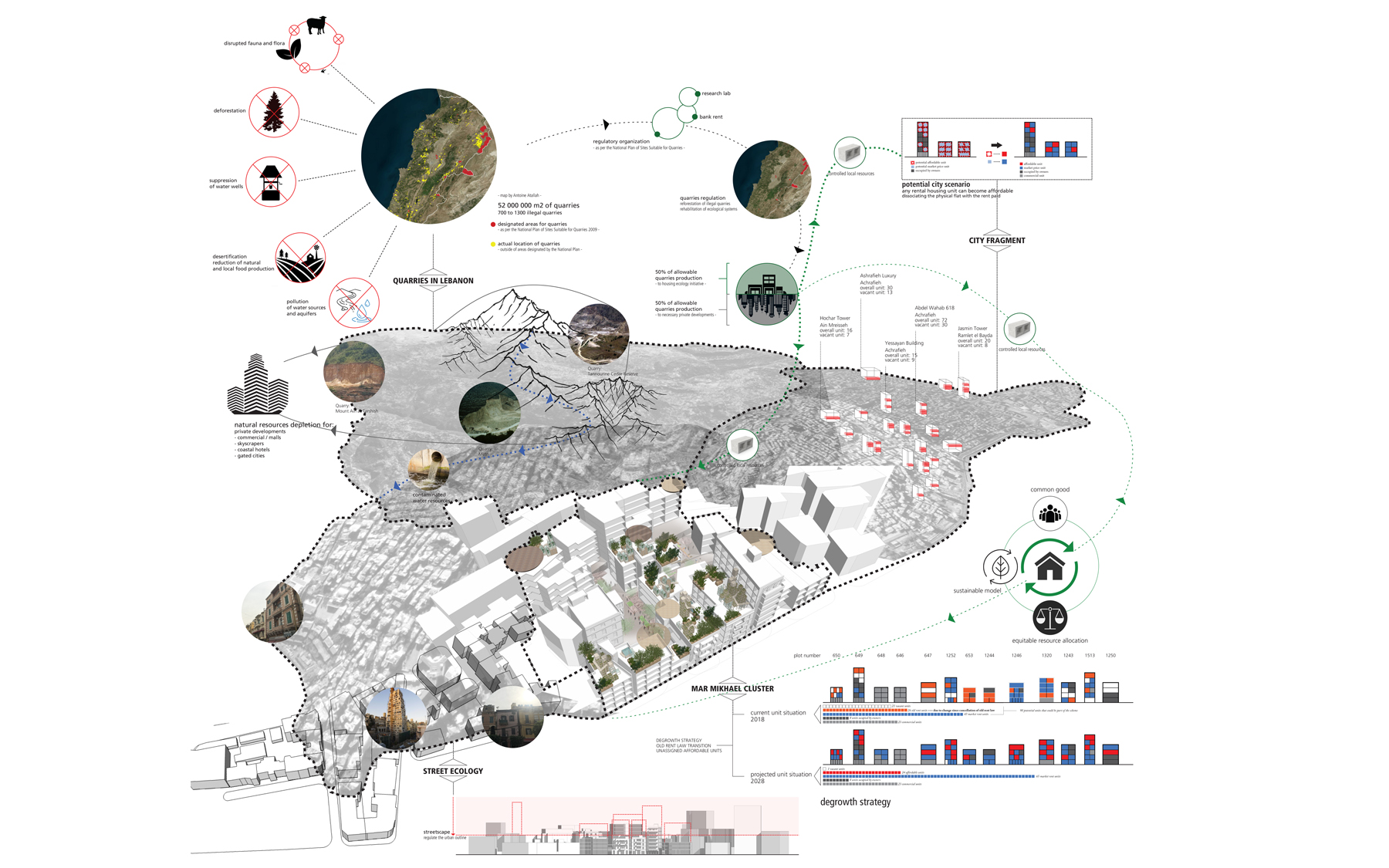
The proposal aims at fostering a culture of inhabiting the environment rather than setting parameters and building frameworks within which perceptions of housing are confined. By encouraging communal strategies towards the degrowth of the city and by engaging existing governmental forums to participate at the scale of its neighborhoods, we believe that a healthy ecology of living would be made sustainable within the diverse citizenship of Beirut. With the increase in affordable housing units across the city, and an assimilation of those units within the existing fabric (as opposed to their segregation within designated zones), we would pave the road towards a socially conscious transformation aimed at engaging the city housing ecologies as a shared urban resource.
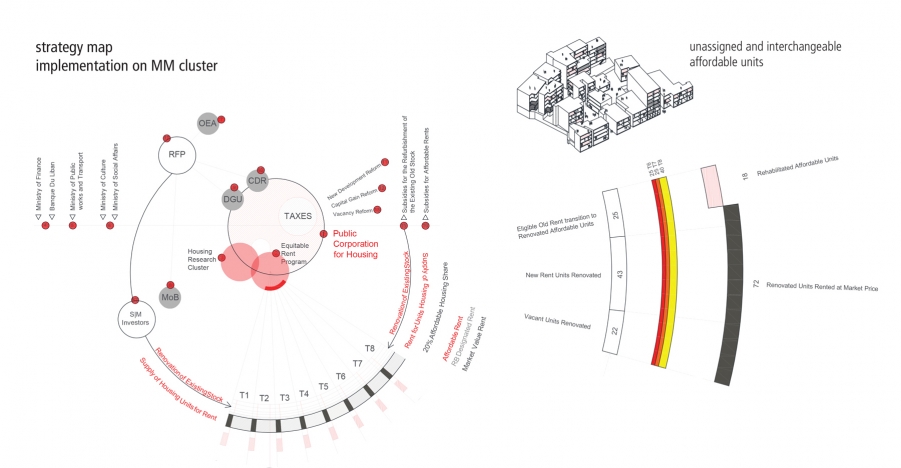
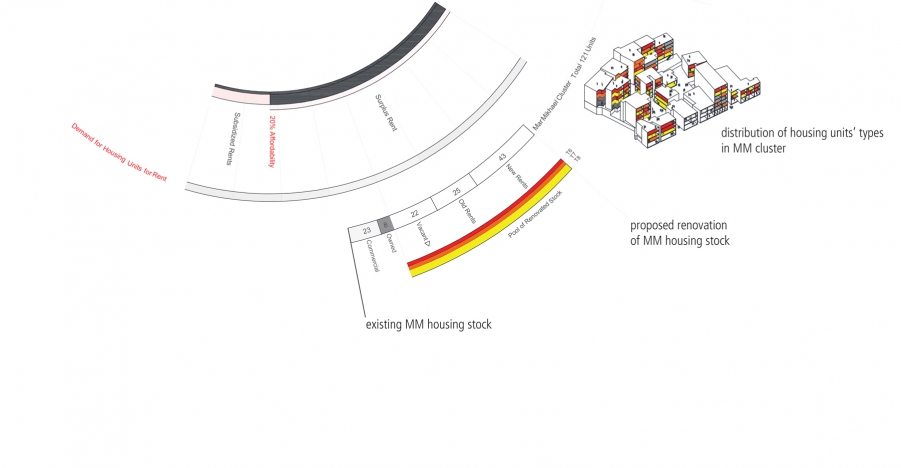
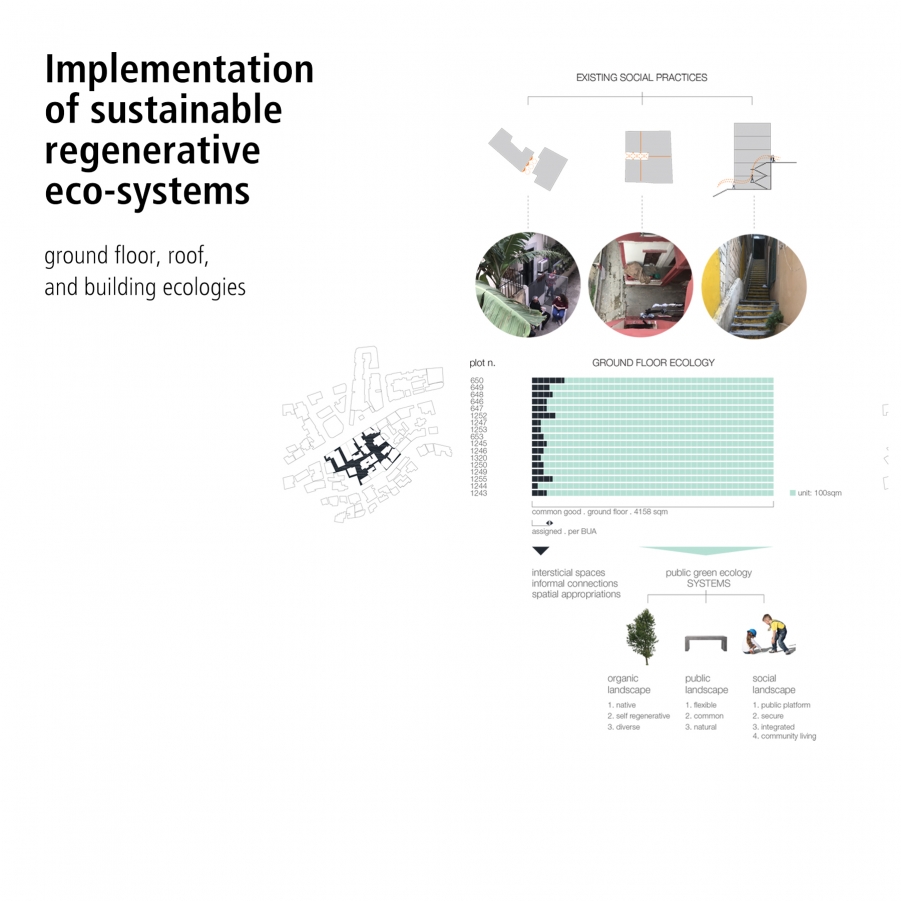
This new ecology, geared towards a more sustainable, adaptable, and inclusive ecosystem is driven by simple strategies of spatial appropriation. Building on our site observations and existing social practices, we would envisage multiple possibilities for strategic intervention and future development.
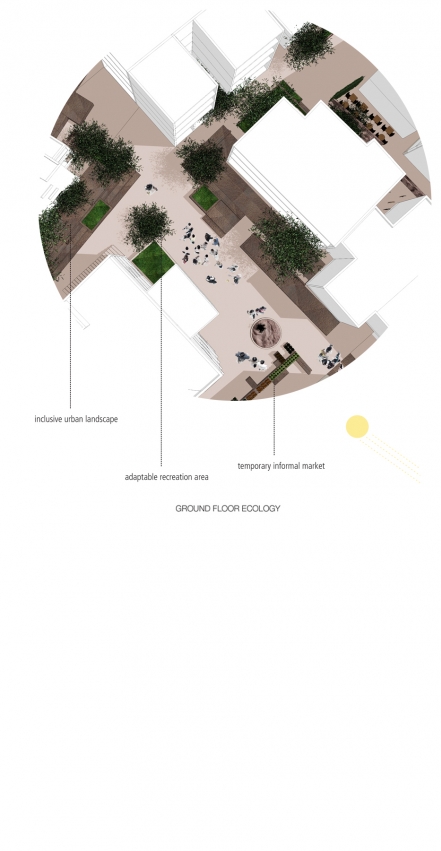
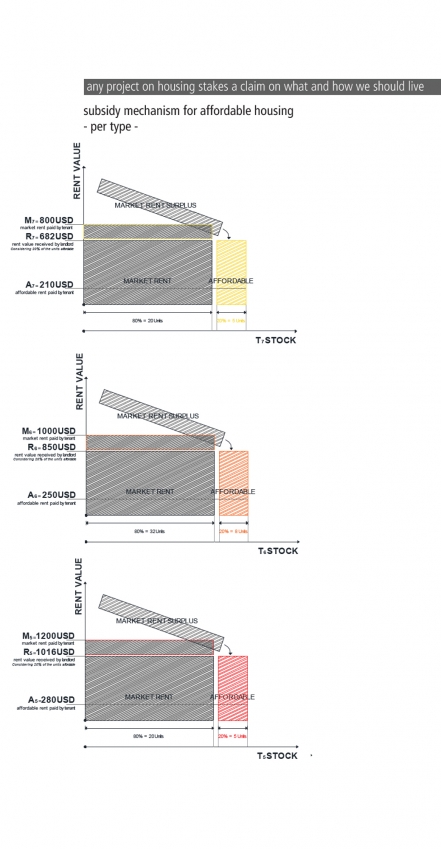
The Ground Level could become an uninterrupted expanse acting as a platform for social encounters, exchange and spontaneous events. This could be activated and enhanced through interstices spaces, the appropriation of doorways, passageways and thresholds: a complex of nuanced traditions and routines which already exists and would only be encouraged within this collective appropriation. We imagine the plausible reality that the ground level could act as an organic social landscape, integrated and inclusive: linking the buildings that will start to champion new modes of sustainable and flexible living patterns.
As Degrowth emerged from ecological approaches, we envision our roof ecology as a platform for innovative forms of urban agricultural production, natural habitats for species regeneration and greenhouse microcosms that help secure particular microclimates. The aim is to include the MM cluster in a sustainable production ecosystem that offers an inclusive and self-sufficient living. The rooftop also houses large collective rain water recipients to address the frequent water shortages in the neighborhood. We imagine the plausible reality that the roof level could act as a regenerative green ecosystem, efficient and sustainable: creating new processes of production and challenging the destructive status quo of our current use of natural resources.

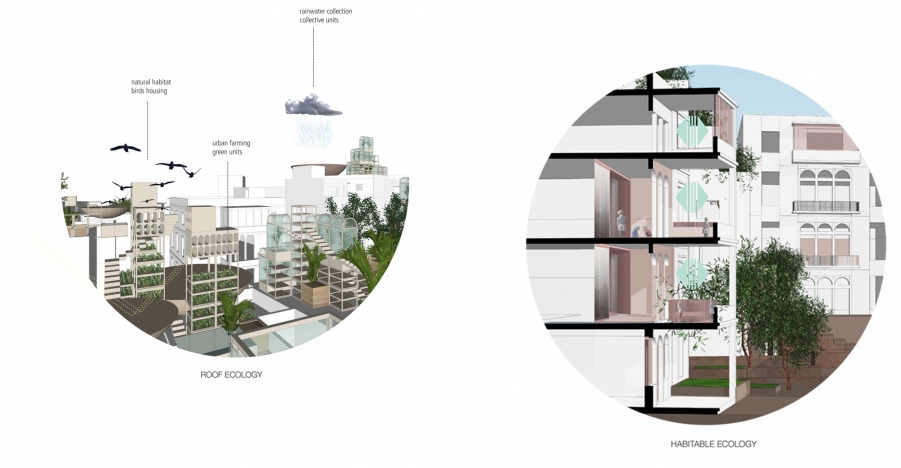
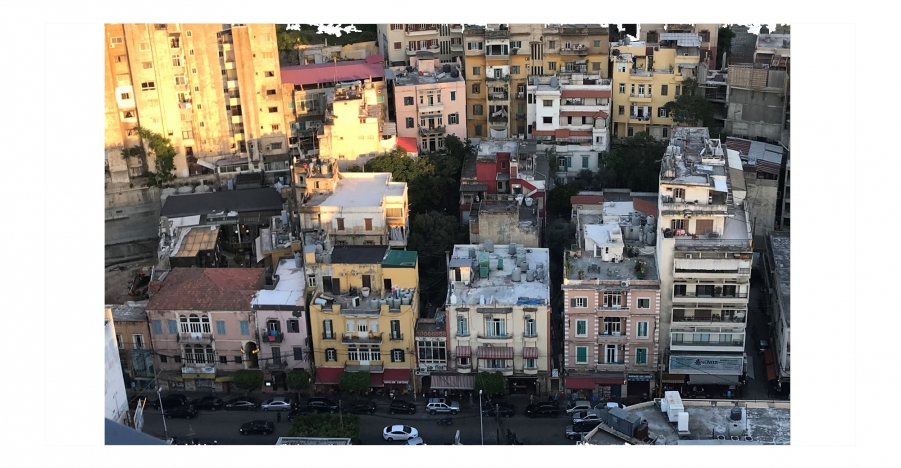
The habitable space is an adaptable and inclusive platform interacting with the Ground Level and fueled by the roof systems. It encapsulates the refuge as well as the prospect. We envisage this space as a flexible and sustainable potential that each individual or family can appropriate as an opportunity to receive and to contribute to the larger community. We call for the appropriation of habitable space rather than claiming its ownership. Tactics such as shrinking the domestic private spaces and expanding onto the public common areas help creating participatory communities. The Rehabilitation of these building will be implemented using green materials and efficient systems. We imagine the plausible reality that the habitable spaces could act as models for flexible, expandable and self-sufficient urban living: creating inclusive and self-reliant communities.
